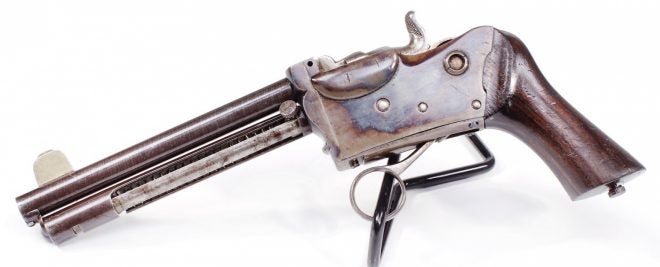Handguns are commonly known in the categories of single-action, double-action, and semi-automatic. However, students of firearms curiosa know there to be another category to exist before the semi-automatic: the so called “self-loading” pistol.
Let’s break it down for the beginner. A single-action firearm is one in which, when the trigger is pulled, one thing happens (the hammer falls). A double-action firearm is one in which, when the trigger is pulled, two things happen (the hammer comes back, the hammer falls).
Magazine pistols like this Berger, however, require more than just the hammer coming back and falling. “Quadruple-action” is a term I started using to describe the cocking, ejecting, loading, and firing that takes place during the normal cycle of operations. My friend Ian McCullum of Forgotten Weapons recently visited us at the Institute of Military Technology and told me he thought it would more accurately be called a quintuple action and, well, who am I to argue.
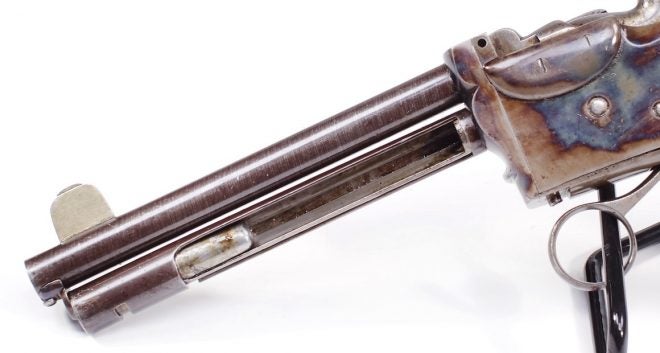
Berger Self-loading Pistol, magazine tube open – Institute of Military Technology Collection
As previously mentioned, this Berger is a magazine pistol. The magazine shown here is remarkably similar to the 1860 Henry rifle magazine (or more specifically its Volcanic predecessor) in which the follower is pushed away toward the muzzle, then rotated into the open and locked position. Cartridges are then loaded, and the spring follower is returned to the engaged position.

Berger Self-loading Pistol, magazine tube open – Institute of Military Technology Collection
Shown here is another view of the magazine locked forward. Interestingly, the magazine works very well for right-handed shooters as the “magazine tray” is in the up position when the firearm is rotated 90-degrees to the right. Left-handed shooters will need to load overtop of the barrel.
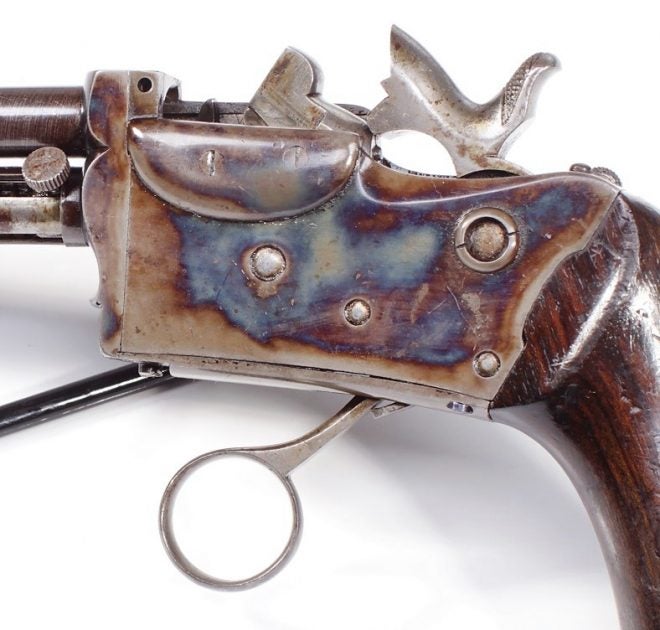
Berger Self-loading Pistol, half way through the loading cycle – Institute of Military Technology Collection
Here we see the Berger with the ring-trigger partially pulled against spring pressure from the mainspring. (It was not mechanically designed to pause in this position, but the gun was being polite and held itself this way for the photo shoot). At this stage in the cycle of operations the Berger would normally be extracting the previous round and the extractor can be seen at the top of the photo. Continued pull of the trigger is also moving the hammer and the breech block rearward at this point. Note the magazine tube is in the rear position allowing the spring and follower to push rounds toward the elevator shown below.
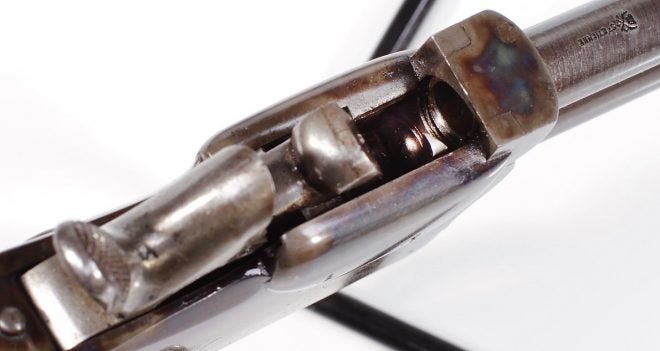
Berger Self-loading Pistol, magazine follower – Institute of Military Technology Collection
From this view the magazine follower is visible, and a there’s a better view of the extractor.

Berger Self-loading Pistol, elevator shown – Institute of Military Technology Collection
From the top we have a much better view of the elevator and the St. Etienne barrel marking. The elevator is somewhat similar to the Remington Rider magazine pistol.
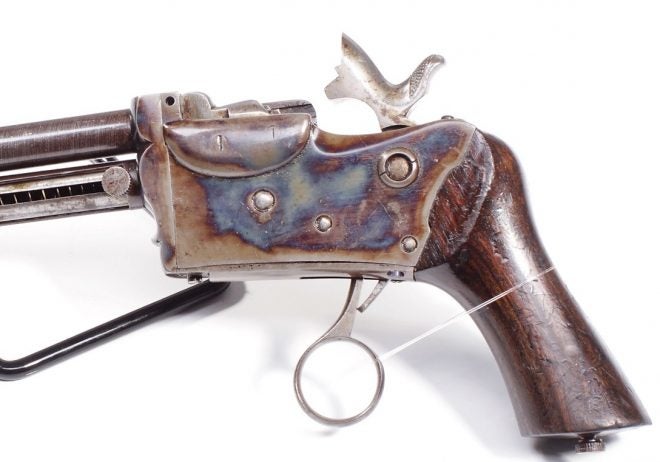
Berger Self-loading Pistol, chambered – Institute of Military Technology Collection
As we continue to pull the trigger rearward, the hammer continues to move rearward, a new round is elevated, and the breech block snaps forward feeding the cartridge into the chamber. Note that the ring trigger has been held back with a wire tie as this pistol is quadruple-action only! (Similar to those hammerless revolvers we call “double-action only” – there is no single action option). Pulling the trigger slightly further to the rear causes the hammer to fall and the weapon to fire. Hopefully the sights are still aligned to the target at that point.
CORRECTION: User yukon cornelius astutely asked in the comments, “If the pistol is quadruple action only, what is the reason for the hammer spur?”
My statement that the pistol was quadruple-action only was based on my attempt to operate the pistol in a single-action fashion, but the action bound up and it was my opinion that the Berger was not designed to operate this way. After considering yukon cornelius’ question, I reexamined the gun and found that the action was simply sticking heavily in the cycle of operation (just before the action block falls). Manipulating the hammer with a little extra gusto, I was in fact able to operate the Berger in a single action manner. Thanks for the great comment! – CRW
 Your Privacy Choices
Your Privacy Choices
